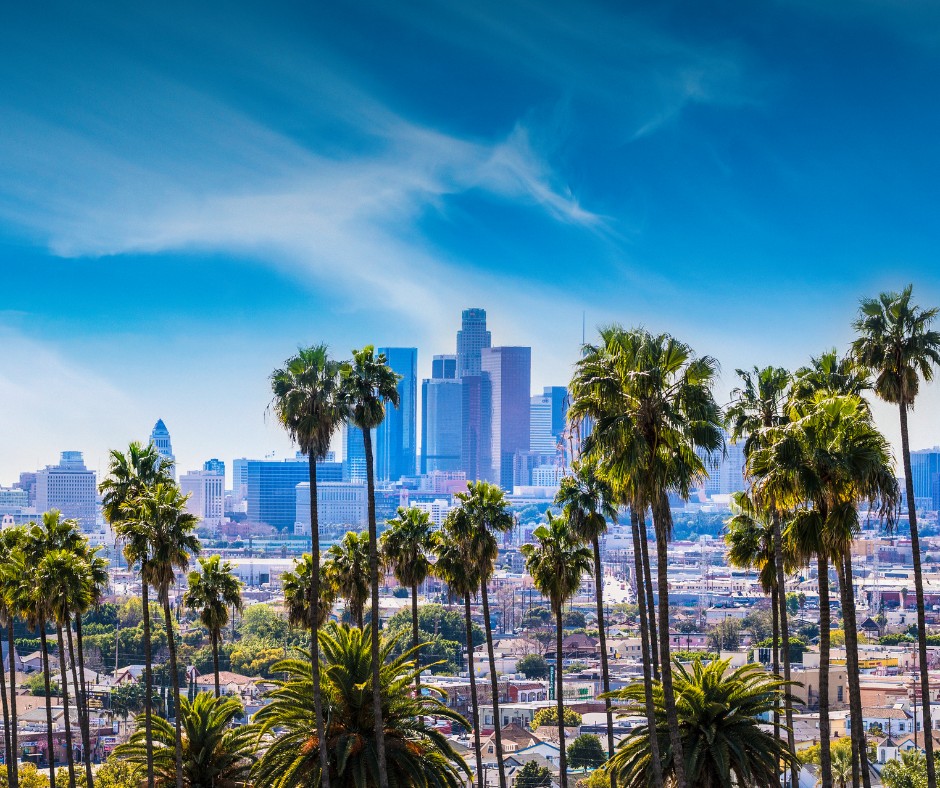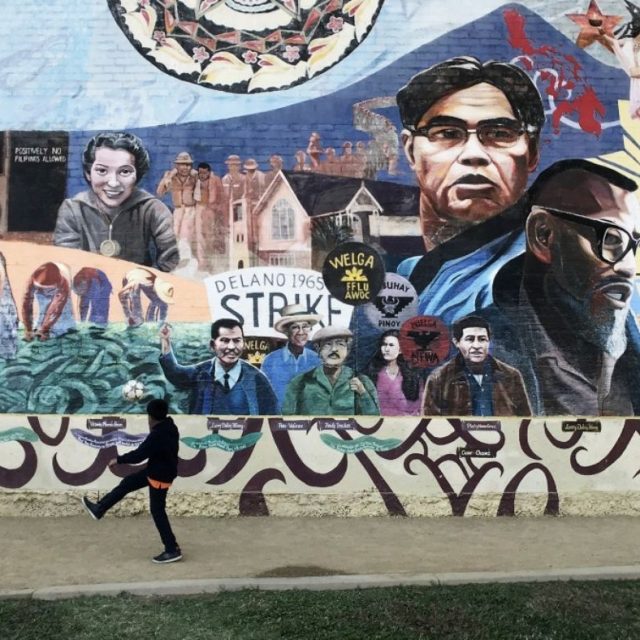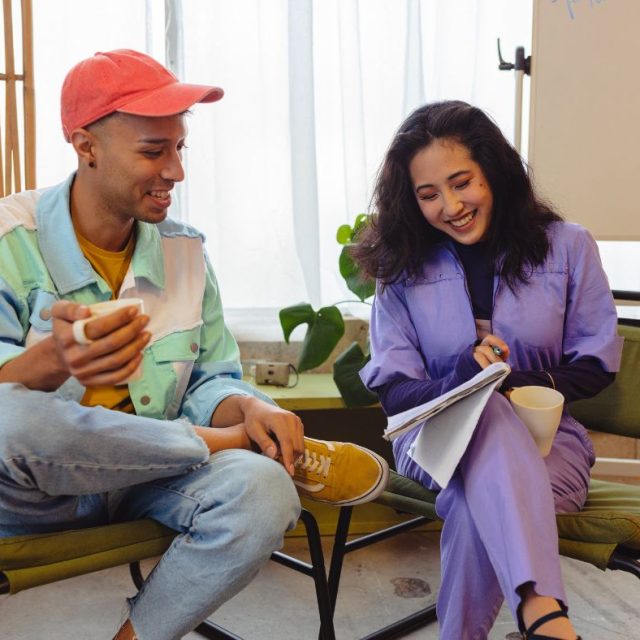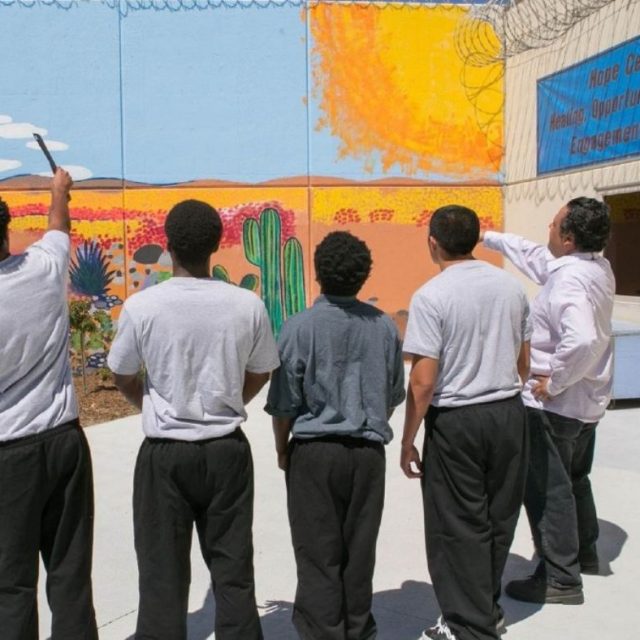Los Angeles: Leading the Way in Cultural Policy and Collaboration
The City of Los Angeles spans over 500 square miles, and is part of the broader Los Angeles County, which encompasses 88 incorporated cities with nearly 10 million residents

Cultural Heritage
Los Angeles is celebrated as the entertainment industry capital of the United States and is increasingly recognised as a creative hub for art and culture. It stands out as one of the largest and most culturally diverse regions in the Americas. The Los Angeles county region at large is nearly 10 million people and 4,000 square miles. It is geographically diverse, with densely populated urban centres, deserts, valleys, and coastal communities. It is culturally diverse, with over 200 languages spoken, communities practicing arts and cultural forms from all over the world. The city’s population is nearly half Latino and is a majority people of colour—ahead of the coming trend for the rest of the U.S.
Los Angeles’ remarkable size and diversity are key cultural assets. The city is home to beloved and popular ethnic enclaves and neighbourhoods including Boyle Heights, Chinatown, Echo Park, Historic Filipinotown, Koreatown, Leimert Park, Little Armenia, Little Tokyo, Pacoima, San Pedro, Thai Town, Venice, Watts, and areas like West LA/Westwood with its large Persian community.
Beyond its globally recognised leadership in film, television, and music production, Los Angeles city and region has a dynamic nonprofit cultural sector, rich artistic legacy, and international influence. It boasts major venues like the Los Angeles County-owned Hollywood Bowl, Los Angeles County Museum of Art (LACMA), Walt Disney Concert Hall, Natural History Museum, and Music Centre, and cultural institutions such as The Getty, Broad Museum, Autry Museum of the American West, and Museum of Contemporary Art. These larger institutions are a part of a wide-ranging arts ecosystem of diverse organisations rooted in Black, Latino, Asian, and Indigenous arts and culture. These include the Japanese American National Museum, Self-Help Art and Graphics, California African American Museum, and East West Players, and organisations with deep ties to, or led by, artists, and grassroots arts activities.
Los Angeles County’s cultural ecosystem includes more than 3,499 nonprofit arts organisations and more than 150,000 working artists. Los Angeles has more working artists than any other major metropolitan area in the United States. The creative economy is a significant driver of the region’s economy adding more than $164 billion in gross value to the local economy and $95.1billion to labour income. The creative economy generates more than 21% of all jobs in Los Angeles County.
Embracing Change
Los Angeles County boasts a vibrant cultural ecosystem, comprising over 3,499 nonprofit arts organisations and a thriving community of more than 150,000 working artists. Notably, Los Angeles hosts more working artists than any other major metropolitan area in the United States. This creative economy plays a pivotal role in driving the region’s prosperity, contributing over $164 billion in gross value to the local economy and fuelling $95.1 billion in labour income. Impressively, the creative economy accounts for more than 21% of all jobs in Los Angeles County.
Both the Department of Cultural Affairs (DCA) and the Los Angeles County Arts Commission (LADAC) share a common focus on access, diversity, equity, and inclusion, intensifying their efforts to reach underserved residents. This commitment includes initiatives such as DCA’s artist-in-residence grants, which place teaching artists within social justice organisations, as well as recent programs like the Arts Workforce Empowerment Grant (AWE). LADAC, on the other hand, advances the cause through its Cultural Equity and Inclusion Initiative (CEII) and the development of a Countywide Cultural Policy, all of which are geared towards achieving region-wide goals and fostering inclusive cultural programs.

The Role of Policymaker
The government of the City of Los Angeles is led by a Mayor in collaboration with 15 City Council Members. The County of Los Angeles is governed by a five-member Board of Supervisors, each holding the legal status of Mayor in their respective districts, and collectively overseeing the County’s jurisdiction and its substantial $38 billion budget. A noteworthy milestone in the County’s history is the current all-female Board of Supervisors.
Crafting cultural policy for Los Angeles necessitates collaborative leadership from both the City of Los Angeles Department of Cultural Affairs (DCA) and the Los Angeles County Department of Arts and Culture (LADAC), which, since 2019, has transitioned under new leadership with an expanded mission.
Los Angeles faces a multitude of civic challenges, including air pollution, commercial development leading to displacement, housing issues, neighbourhoods lacking shade trees in high-heat areas, transportation planning, and water resource management. Many of these challenges revolve around affordability and sustainability concerns.
Presently, over 66,000 individuals in Los Angeles are experiencing homelessness, and this growing crisis has compelled the city to establish public-private partnerships to devise comprehensive solutions. The scarcity of affordable housing, coupled with the rise of gentrification and displacement, poses a threat to cultural preservation and integration throughout the city.
DCA relies primarily on an estimated one percent of the City’s Transient Occupancy Tax, a figure significantly lower than the 4-6% benchmark that would align it with similar cultural-tourism sectors in cities like New York or San Francisco. All these opportunities and challenges are unfolding within the context of Los Angeles’ recovery from the Covid-19 pandemic and its preparations to host the Olympic Games in 2028.
Los Angeles’ cultural industries are confronting their own distinct set of challenges. Following a reckoning on issues of race and equity ignited by the tragic killing of George Floyd, there is a growing determination to address historic patterns of inequity in Los Angeles, particularly within the arts sector. The property and affordability crises have also directly impacted the cultural sphere, limiting access to exhibition, studio, and performance spaces. Furthermore, the ongoing trend of converting light industrial and warehouse spaces — vital components of Los Angeles’ cultural infrastructure — into upscale residential developments instead of functional studios for independent artists and working-class families further exacerbates the shortage of affordable living and workspace.
The pandemic has inflicted significant losses on cultural organisations, including years of decreased earned revenue, funding instability, staff layoffs to curtail expenditures, and a shift in audience engagement towards online, broadcast, and podcast alternatives.
Los Angeles’ cultural sector has sought solace in government funding support, mitigating the worst effects of the pandemic. This assistance includes federal funds through the LA County CARES Act Arts Relief Fund, additional allocations from the American Rescue Plan for arts recovery government programs, and collaborative funding efforts like the 2021 LA Arts Recovery Fund—an unprecedented public-private arts funding endeavour in Los Angeles, amounting to nearly $40 million, with a substantial portion allocated to organisations representing communities of colour.
The Future
Both the DCA and LADAC remain steadfast in their commitment to advancing access, diversity, equity, and inclusion, intensifying their efforts to serve marginalised communities. DCA, for instance, has established artist-in-residence grants aimed at embedding teaching artists within social justice organisations. Additionally, they have initiated the Arts Workforce Empowerment Grant (AWE) Program. LADAC, on the other hand, has launched the Cultural Equity and Inclusion Initiative (CEII) and developed a Countywide Cultural Policy, both of which are geared toward advancing region-wide objectives and programs. These concerted efforts underscore the agencies’ unwavering dedication to ensuring that cultural opportunities are accessible to all.
© Images Courtesy of Getty/Canva




